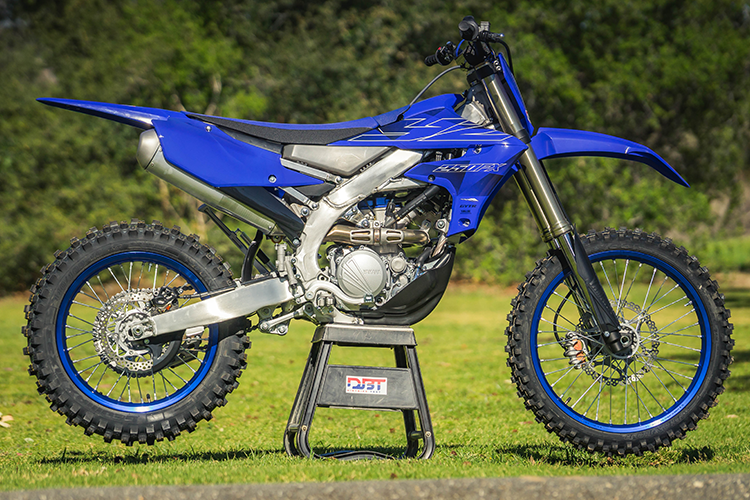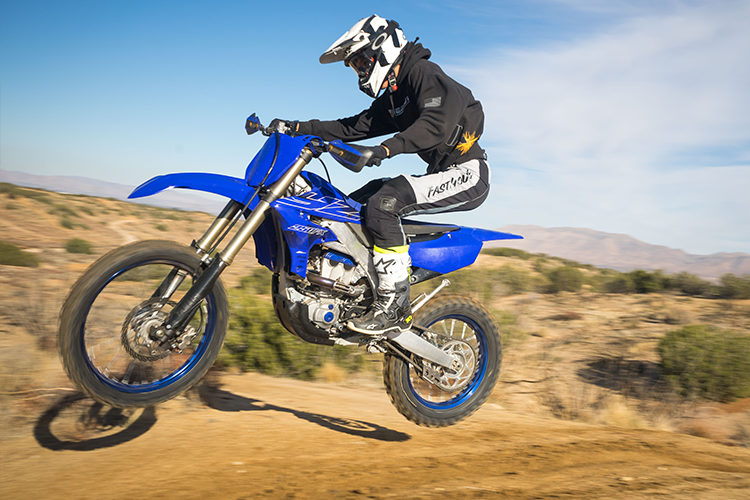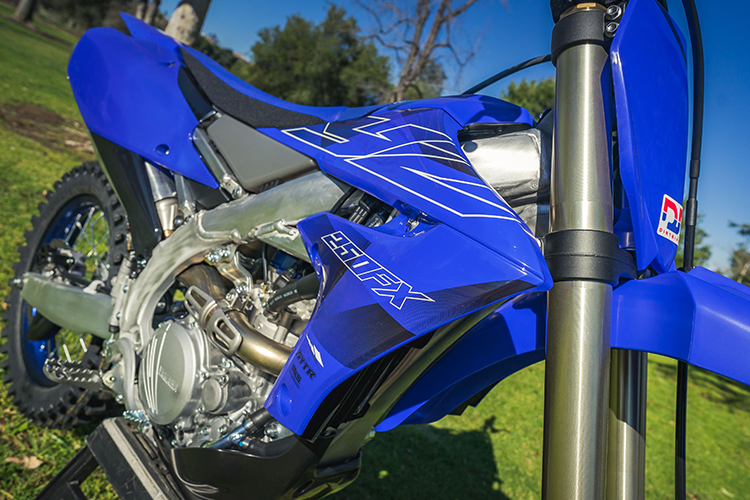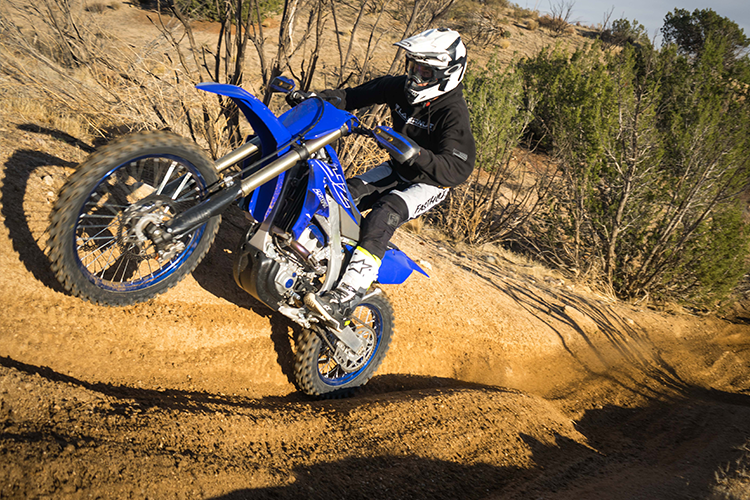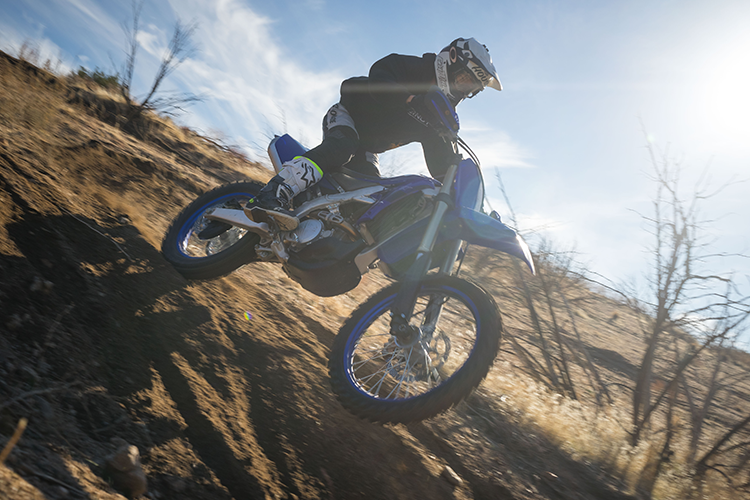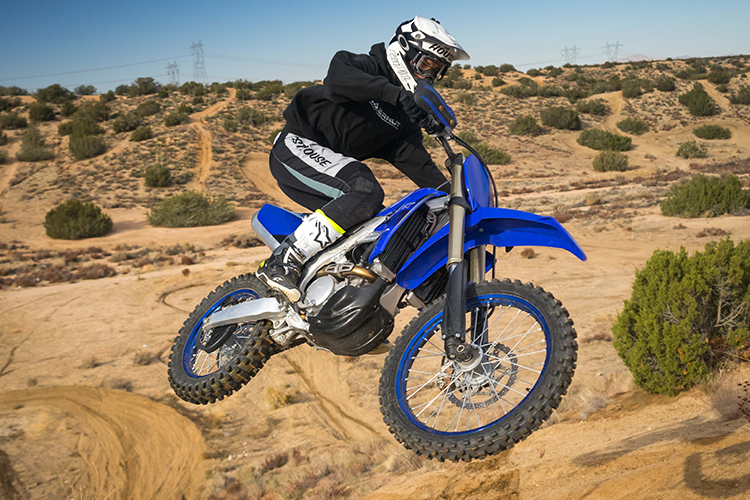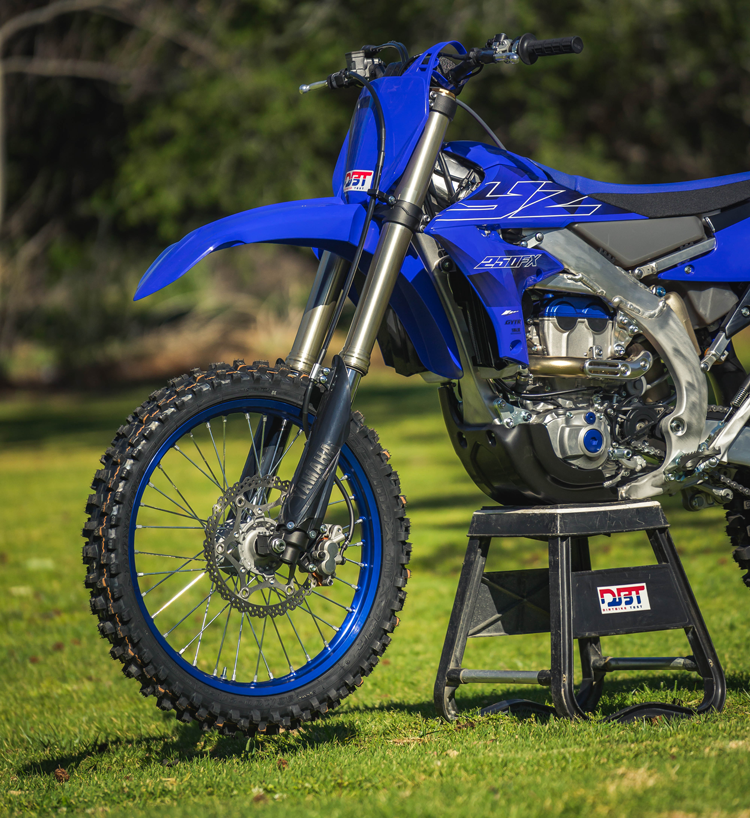The Best One Yet?
Story and Photos by Trevor Hunter
After a big change to the YZ250F in 2021, we were expecting very similar changes to rollover to Yamaha’s 2022 YZ250FX off-road racer – and we got them. Yamaha updated the chassis, engine, and suspension settings for the new model year and have stuck with the trend in the current crop of bikes.
Over the past several years, we’ve seen the OEMs look at a specific direction in bike development and almost all have gradually gravitated towards this in their model updates. That direction is stiffer, more aggressive, and sharp shooting platforms that could be described as “race inspired.” And as we expected, Yamaha’s 2022 YZ250FX took another step in that direction. Is it for good measure? Keep reading to find out!
While the changes don’t look earth shattering from afar, the bLU cRU introduced quite a few new advancements. A new intake system helps deliver air more efficiently and directly, and the exhaust camshaft is new. To help slow down the newfound power, updated front and rear brake systems are in place like the MX models have. Those brake developments include a stronger front brake and a lighter, smaller rear brake matched with a 5mm smaller rear rotor. The new frame is now the same as the YZ250F again, though different engine mounts developed for off-road riding hold everything together.
The motor is impressive. It’s been nearly 10 years since Yamaha flipped their 250F motor around and started dominating the 250cc classes. In the beginning, it was a very bottom-end heavy motor that didn’t rev out all that well. After a few years, updates saw some more mid-range and a little more top-end brought to light to help spread the motor and suit different riding styles. In 2022, they’ve increased that mid-range and brought a lot more top-end in to complete the package. The broad power spread is pretty unique in the 250F ranks as it’s a spread that anyone can ride. Whether you’re a novice or a pro, you can ride the bike at any RPM and go very fast.
Per usual, its most unique trait is the amount of torque and power it has down low for a 250F. While many of the engine updates over the years have been focused on spreading that power around, there is still as much power as you’d want or need from a 250F off the bottom. You can lug and chug this motor around with relative ease. You can make a mistake or get lazy and be in too high of a gear only to come out of it and get back up to speed in a jiffy. Transitioning to the mid-range, the bike keeps pulling strong – as strong as any in this class – and into the top-end where the bike is very competitive with the highest revvers in the class.
One of our biggest complaints from the previous gen motor was the wide-ratio transmission would be hard to pull at times. Some of the gaps in gears were a tad big and to stay in it, we had to rev the bike more than we wanted. With the updated engine, we can pull 3rd-6th much better than before. And with 1st-2nd gears being so low, we rarely need to dip into these gears unless the terrain gets really tight and technical.
We say this all the time but it’s true – setting up production off-road suspension is nearly impossible in the US. Conditions, terrain, and speed are so drastically different from East to West that one setting really doesn’t transfer from one coast to another. The previous gen 250FX was pretty good to us, but we still found ourselves looking for more hold up and a stiffer overall feel for faster conditions. Yamaha answered that call for 2022 and maybe even a little too much!
The forks on the FX feel firm on our first days out. They ride higher in the stroke than previously and while they resist bottoming, it’s missing some of that supple KYB feeling that we have come to love from Yamaha’s forks. We’ve played with clickers and have had luck with softening the forks, but it’ll be interesting to see how they work in varied terrain. Out back, the shock is on the softer side and feels like it’s lacking a little balance from front to back. Again, playing with clickers and high-speed compression helped, but we’ll need to take it to different areas to get a better feel for how it reacts. Still, we’d say this suspension is some of the better stuff stock and we’d feel comfortable racing it as is – we just think it could be better with more time and tuning.
The overall chassis feels more nimble, responsive to rider input, and easy to maneuver. The older chassis had plenty of stability and liked to stay in a flow, but pivoting and quick movements were a chore at times. This new chassis sacrifices a tad of stability, although it still feels quite stable at speeds, and in turn rewards you with a more agile chassis. With these changes, it’s about average in terms of light feeling and nimbleness. With some time on the bike, you warm up to it fairly quickly. But if you’re hopping around between bikes, the Yamaha takes some time to learn its traits and to get over the “wide feeling” that it portrays.
This bike has been right there at the top of the charts for nearly a decade now and with each model revision, the bLU cRU has shown they’ve done their homework when developing this bike. The motor is still one of, if not the best in class that really is designed for the masses. Some other motors may have more peak power, but 99% of riders will never come close to using that power unless they’re sitting on a dyno. KYB coil-spring suspension components are tried-and-true and the new settings, while not perfect, still have great potential and work very well for stock. The chassis is now more modern with a sporty feel and it’s more aligned with the rest of the class. With a “250FX” off-road comparison in the works, it’ll be interesting to see how the rest of the bikes stack up with the Yamaha!
